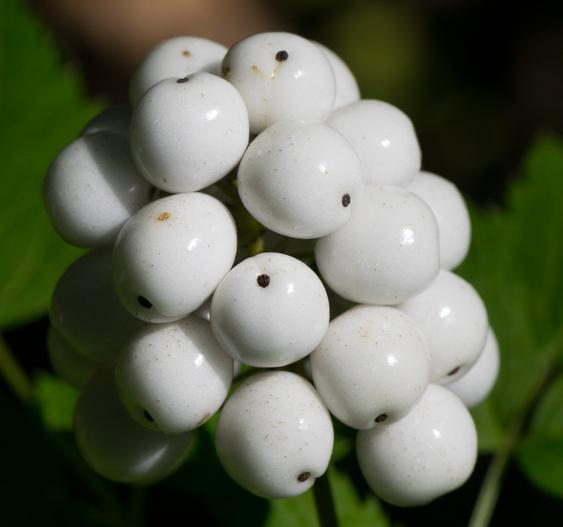White Baneberry
(Actaea pachypoda)
White Baneberry (Actaea pachypoda)
/
/

Joshua Mayer
CC BY-SA 2.0
Image By:
Joshua Mayer
Recorded By:
Copyright:
CC BY-SA 2.0
Copyright Notice:
Photo by: Joshua Mayer | License Type: CC BY-SA 2.0 | License URL: https://creativecommons.org/licenses/by-sa/2.0/ | Uploader: wackybadger | Publisher: Flickr











































































Estimated Native Range
Summary
Actaea pachypoda, commonly known as White Baneberry or Doll’s Eyes, is a deciduous perennial herb that is native to rich, deciduous forests and woodland edges in the Eastern United States, extending into Southeastern Canada. It typically grows to a height of 50 cm (1.6 ft) or more. The plant features compound leaves and a striking appearance, with small white flowers blooming in spring in dense racemes about 10-8 cm (4-3 in) long. The flowers are not particularly showy, but they give way to the plant’s most notable feature: its fruit. The white berries are about 1 cm (1/2 in) in diameter, with a distinctive black stigma scar, resembling the eyes of a doll, hence the name "doll’s eyes". These berries mature over the summer and persist on the plant until frost, providing visual interest even after the leaves have fallen.
White Baneberry is valued for its unique berries and foliage, making it a conversation piece in shade gardens and woodland plantings. It is often used in traditional and wildlife gardens for its aesthetic appeal and ability to attract birds. While the plant prefers part or full shade, it requires rich, loamy soil with consistent moisture and good drainage to thrive, mimicking its natural forest floor habitat. It is generally low-maintenance but should be planted with care, as all parts of the plant, especially the berries, are highly toxic if ingested. Gardeners should be aware that White Baneberry can be susceptible to leaf spot and powdery mildew, especially in humid conditions. Despite its toxicity, the plant is not considered invasive and remains well-behaved in garden settings.CC BY-SA 4.0
White Baneberry is valued for its unique berries and foliage, making it a conversation piece in shade gardens and woodland plantings. It is often used in traditional and wildlife gardens for its aesthetic appeal and ability to attract birds. While the plant prefers part or full shade, it requires rich, loamy soil with consistent moisture and good drainage to thrive, mimicking its natural forest floor habitat. It is generally low-maintenance but should be planted with care, as all parts of the plant, especially the berries, are highly toxic if ingested. Gardeners should be aware that White Baneberry can be susceptible to leaf spot and powdery mildew, especially in humid conditions. Despite its toxicity, the plant is not considered invasive and remains well-behaved in garden settings.CC BY-SA 4.0
Plant Description
- Plant Type: Herb
- Height: 1-3 feet
- Width: 2-3 feet
- Growth Rate: Slow
- Flower Color: White
- Flowering Season: Spring
- Leaf Retention: Deciduous
Growth Requirements
- Sun: Part Shade, Full Shade
- Water: Medium
- Drainage: Medium
Common Uses
Bee Garden, Bird Garden, Border Plant, Butterfly Garden, Deer Resistant, Fragrant, Hummingbird Garden, Rabbit Resistant, Water Garden
Natural Habitat
Rich, deciduous forests and woodland edges in the Eastern United States and Southeastern Canada
Other Names
Common Names: Doll’s-Eyes, White Cohosh, Baneberry, Actée Blanche, Actée À Gros Pédicelles, Vit Trolldruva
Scientific Names: , Actaea pachypoda, Actaea pachypoda f. rubrocarpa, Actaea pachypoda f. pachypoda, Actaea alba f. rubrocarpa, Actaea brachypetala var. caerulea, Actaea brachypetala var. coerulea, Actaea brachypetala var. microcarpa, Actaea pachypoda f. microcarpa,
GBIF Accepted Name: Actaea pachypoda Elliott